INDIAN ARMED FORCES CHIEFS ON OUR RELENTLESS AND FOCUSED PUBLISHING EFFORTS

The insightful articles, inspiring narrations and analytical perspectives presented by the Editorial Team, establish an alluring connect with the reader. My compliments and best wishes to SP Guide Publications.

"Over the past 60 years, the growth of SP Guide Publications has mirrored the rising stature of Indian Navy. Its well-researched and informative magazines on Defence and Aerospace sector have served to shape an educated opinion of our military personnel, policy makers and the public alike. I wish SP's Publication team continued success, fair winds and following seas in all future endeavour!"

Since, its inception in 1964, SP Guide Publications has consistently demonstrated commitment to high-quality journalism in the aerospace and defence sectors, earning a well-deserved reputation as Asia's largest media house in this domain. I wish SP Guide Publications continued success in its pursuit of excellence.
Time to Fly
Presently there seems to be a semblance of balance, equity, growth, good ATF pricing, forward movement and proactiveness on the part of the government, all of which are propping up the aviation industry in a positive manner
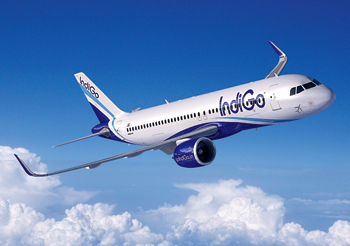
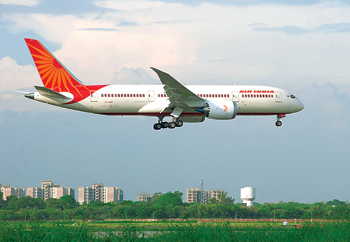
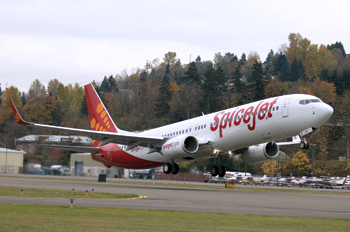
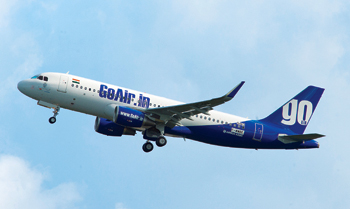
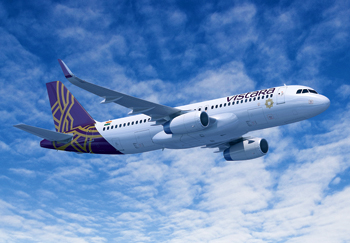
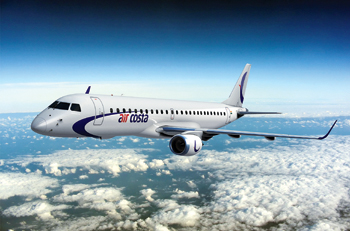
The International Air Transport Association (IATA) in its long-term forecast (2014-34) has put India among the five fastest growing markets in terms of additional passengers per year over the forecast period. China tops with 758 million new passengers for a total of 1.196 billion, followed by the US 523 million new passengers for a total of 1.156 billlion, India with 275 million new passengers for a total of 378 million; Indonesia (132 million new / total 219 million) and Brazil (104 million new / total 202 million).
China and India are growing fast, with annual growth this year to date of 12.5 per cent and 16.5 per cent respectively. India has bounced back from a subdued 2014, and is seeing a strong increase in domestic frequencies.
With such impressive growth potential, is India up there to meet this forecast? It appears so, considering that the aviation sector and airlines per se in India are making substantial headway in terms of growth – aircraft acquisitions; passenger numbers; cargo expansion, airport modernisation, new technologies, crew training, etc. Above all, there is a government at the helm which is taking more interest in aviation than before. Realising that it has the potential to unlock economic growth, the government has come out with the new draft National Civil Aviation Policy which we all believe would do well to boost the sector.
Airlines in India
Airline business, not just in India but the world over, is a high risk business. We have seen in recent years how airlines have come, made noise and then disappeared. And the reasons for that are many, mainly mismanagement or getting the business model wrong or just their bad luck.
Whatever, presently there seems to be a semblance of balance, equity, growth, good ATF pricing, forward movement and proactiveness on the part of the government, all of which are propping up the aviation industry in a positive manner. The potential for more regional airlines is on the near horizon, while the mainline and low-cost carriers may expand on their aircraft base.
Presently, there are 15 scheduled operators in the country. Of that, two are cargo operators – Blue Dart Aviation and Quik-Jet Cargo. Of the remaining 13 scheduled operators, there are four regional aviation operators – Air India Regional, Air Costa; Air Pegasus and Turbo Megha Airways. The rest are either fullservice carriers or low-cost airlines. That is a number which does not reflect India’s size and also the growing aviation sector, but the heartening factor is that these airlines are on an aircraft acquisition spree and are becoming ‘healthy’.
IndiGo, the market leader
IndiGo, which commenced operations in August 2006 with just one aircraft, is now the largest airline by market share and is working towards keeping its average fleet age at four years till 2032.
IndiGo operates one type of aircraft: Airbus A320-200s, seating 180 passengers. It serves 34 cities within India and five cities (Bangkok, Dubai, Kathmandu, Muscat and Singapore) internationally with 650 daily flights as on December 25, 2015. It is also growing its cargo business, carrying over 12,000 tonnes of cargo every month, along with route expansion.
IndiGo has been making international headlines with its aircraft orders. The last order in 2015 was for 250 Airbus A320neos. Its last three bulk orders of 530 aircraft will be delivered in 2026. Its growth has been phenomenal, from orders of 100 Airbus A320 in 2005; 180 A320neos in 2011 and 250 A320neos in 2015. According to Aditya Ghosh, President of IndiGo, the airline will have 330 planes at its peak. IndiGo is one company which has been raking in profits year after year. In fiscal 2015, it had a 33.8 per cent market share of domestic volume. With the orders in place, IndiGo is planning to increase its presence in the number of cities it flies to — adding two to three cities to its portfolio every year. In the next eight-and-a-half years it plans to have presence in 56 airports compared to 34 now.
Jet Airways, full-service and more
Jet Airways is India’s premier international airline operating flights to 73 destinations, including 51 in India and 22 across the world. Jet Airways’ robust domestic network in India spans the length and breadth of the country covering metro cities, state capitals and emerging destinations. Beyond India, Jet Airways operates flights to key international destinations in South East Asia, South Asia, Middle East, Europe and North America.
The Jet Airways group currently operates a fleet of 116 aircraft, comprising Boeing 777-300 ERs, Airbus A330-200/300, Next Generation Boeing 737s and ATR 72-500/600s. It has an average age of 6.63, one of the youngest fleets in the region. Jet Airways together with Airberlin, Air Serbia, Air Seychelles, Alitalia, Etihad Airways, Etihad Regional operated by Darwin Airline, and NIKI, participates in Etihad Airways Partners, which brings together like-minded airlines to offer customers more choice through improved networks and schedules and enhanced frequent flyer benefits. In 2013, Etihad Ariways acquired a 24 per cent stake in Jet Ariways. The company has cut its long-distance fleet and has leased out eight of its widebodied aircraft — Boeing 777s and three A330s — to Etihad. It has leased out a pair of A330s to Turkish Airlines too.
Jet Airways had placed an order for new aircraft in 2006 and was originally expected to take deliveries beginning 2015. The order was first deferred to 2016 when the company upgraded its initial orders for B787-8 planes for the larger B787-9 version. The B787-9s, which have a list price of $257 million, were expected to bolster services of Jet Airways on international routes — especially direct flights to North America.
Jet Airways reported a net profit of Rs. 63 crore in the third quarter of this financial year compared with a loss for the same period year on year. And the airline has set itself a target to turn around operations by 2016-17. According to media reports, the airline is not investing in new aircraft till 2017-18. It is being perceived as a sign that the airline was deferring a $2.6-billion order for 10 Boeing 787-9 Dreamliners. The company has stated that its focus is on increasing utilisation of its existing aircraft, cutting costs through contract re-negotiations and process improvements, and on making existing routes profitable.
Air India Continues to Struggle
India’s national carrier, Air India is the third largest airline in India in terms of passengers carried, after IndiGo and Jet Airways. Air India operates a mixed fleet of Airbus, Boeing, ATR and Bombardier’s CRJ, connecting international, domestic and regional destinations. Air India has 41 wide-body aircraft including 21 Boeing 787 Dreamliners; 66 narrow-body aircraft and 11 regional aircraft. All the wide-body aircraft are Boeing; the narrow-body are Airbus and regional aircraft is a mix of ATR and CRJ.
Indigo’s growth has been phenomenal, from orders of 100 Airbus A320 in 2005; 180 A320neos in 2011 and 250 A320neos in 2015
In 2014, it became the 27th member of Star Alliance, thus offering travellers a lot more international destinations. Air India has prepared a plan to add 25 aircraft since an order for 111 aircraft placed in 2006, as it seeks to expand network to underserved regions. These aircraft, according to media reports, will be used to strengthen its network to smaller cities, which will be connected through an Airbus 320 aircraft and supplemented by another flight with an ATR aircraft. All the additional aircraft (15 Airbus 320s and 10 ATR 72s) will be leased.
Air India has under its belt two other entities, Alliance Air and Air India Charters. Much is expected from the new Chairman and Managing Director Ashwani Lohani to turnaround the flag carrier. As per reports, it has accumulated losses of Rs. 20,000 crore and is aiming to turn profitable by 2018-19. Air India is projected to post a consolidated net loss of Rs. 5,400 crore by end of March 2016. This year’s budget has made very little provision for the airline. For financial year 2014-15, its revenue, operating loss and net loss were Rs. 1,9781 crore; Rs. 217 crore and Rs. 541 crore respectively.
SpiceJet, bouncing back
SpiceJet is a low-cost carrier, the fourth largest by number of passengers carried, with market share of 12.3 per cent as of July 2015. It operates over 290 daily flights to 40 destinations, including six international cities. SpiceJet connects its network with a fleet of 25 Boeing 737NG and 2 Airbus A320 aircraft, along with 14 Bombardier Q400s.
The airline which changed hands recently with one of the founders Ajay Singh coming in with much needed investments when the airline was nose-diving. Having wrested equity from Kalanithi Maran’s Sun Group, Ajay Singh is spearheading the airlines revival as the Chairman and Managing Director. SpiceJet has reported a net profit of Rs. 238.40 crore for Q3 FY 16, an improvement of Rs. 513.42 corre over the net loss of Rs. 275.03 crore for the same quarter last year. SpiceJet has reported an operational revenue of Rs. 1,459.95 crore, demonstrating a growth of 11 per cent over the same quarter last year. This was the fourth consecutive profitable quarter since its turnaround after December 2014.
Ajay Singh had said then, “SpiceJet was back to near normal operations this quarter. While the margins remain slightly depressed due to wet lease operations, the Chennai floods and exchange losses, we are happy with the progress we have made so far. The company will continue to work on reducing legacy cost and increasing efficiency.”
On expansion, he said that the airline would order new planes this fiscal and that the company would ensure that the aircraft are purchased in an ‘optimal manner’. “We hope that we can do it in this financial year...it is important to get it right. It is not important whether you do it in one or two months. Let’s get it right. According to sources, SpiceJet is looking at an order close to 150 new aircraft.
GoAir remains steady
Go Airlines (India) Ltd is the aviation foray of the Wadia Group. It started operations in November 2005 and presently the airline has over 140 daily flights across 22 destinations.
GoAir currently services the airports at Ahmedabad, Bagdogra, Bengaluru, Bhubaneswar, Chandigarh, Chennai, Delhi, Goa, Guwahati, Jaipur, Jammu, Kochi, Kolkata, Leh, Lucknow, Mumbai, Nagpur, Patna, Port Blair, Pune, Ranchi, and Srinagar.
GoAir is positioned as ‘the Smart People’s Airline’. Its captivating theme, ‘Fly Smart’ is aimed at offering passengers a consistent, quality-assured, and time-efficient service through ‘pocket-friendly’ fares. The airline uses the state-of-the-art Airbus A320 aircraft fleet. The airline has also partnered with Radixx International, a leading technology provider of automated aviation and travel-related software solutions, for the use of its Air Enterprise. The adoption of such technology solutions enable GoAir to achieve superior process efficiency, thereby helping transfer a greater portion of time savings to its passengers.
GoAir is set to increase its existing fleet size in the next five years starting from 2016. The move will help the airline in expanding operations and increase the frequency of its flights on the existing routes in the domestic market. The airline which has 20 aircraft, will start receiving 72 A320neo aircraft from Airbus by 2020.
It’s market share increased from 4.1 per cent in 2008 to 8.4 per cent in 2015. The airline is likely to see a compound annual growth rate of 39 per cent by 2020.
Air Costa, regional player to watch
It is India’s first regional airline coming from Vijayawada in Andhra Pradesh. The first flight was on October 2013, from Chennai. It is part of the LEPL Group, a Vijayawada-based company, and it started with 300 employees including expatriate pilots and engineers and commenced scheduled operations in October 2013 using two Embraer E-170 aircraft. The regional airline has four aircraft including two E-190 which have a seating capacity of 112 each. As recently as December 2015, the Ministry of Civil Aviation gave the airline no-objection certificate for pan-India operations and the airline is soon expected to come out with a plan.
Air Costa made headlines in 2014 when at the Singapore Airshow it ordered 50 Embarer E2 jets and options for another 50, orders worth $2.94 billion. Deliveries of the new jet are expected in 2018.
Vistara, making slow inroads
The Tata Group ventured into two airlines at the same time, one a low-cost venture with AirAsia and the other a full-service airline with Singapore Airlines. Vistara is a full-service airline and reportedly the fastest growing in this segment, having completed its first year of operations on January 9, 2016.
Within one year, Vistara has a fleet of nine brand new A320 aircraft. It operates 307 weekly flights to 12 destinations across the country and is hoping that the government will scrap the rule 5/20 (five years in operation and 20 aircraft in its fleet for going international).
Vistara has demonstrated its unique value proposition to its customers consistently through a growing array of innovative offerings—the trendsetting premium economy class, world-class dining experience, unique value based FFP (Club Vistara), seamless and personalised service both on the ground and in the air.
Vistara will be adding four more aircraft to its existing fleet this year and customers can look forward to more new destinations and increased frequencies on current destinations. From February, Vistara fleet incorporated the most advanced in-flight entertainment system which delivers highly engaging audio video content via wireless streaming to customers’ PEDs across all three cabins. Vistara has been able to grab a market share of only 1.9 per cent in a rapidly growing aviation sector. The airline also has the lowest passenger load factor, with 22 per cent of all its flight seats going empty on an average. The airline however maintained the best on-time performance at 90.6 per cent in the month of December, far surpassing all other domestic airlines.
AirAsia India, waiting to expand
AirAsia India is the other venture where the Tatas have a stake in it. It is the first foreign airline to set up a subsidiary in India. It is an Indo-Malaysian low-cost carrier with AirAsia Berhad holding 49 per cent equity, Tata Sons 40.06 per cent and Telestra Tradeplace the remaining 10 per cent. AirAsia India commenced operations on June 12, 2014, with Bengaluru as its primary hub.
It recently announced a third daily flight on the Bengaluru-Delhi route, taking its operations to 40 flights connecting 10 destinations. At the time of launch of India operations, AirAsia India had announced that it was looking at 10 aircraft per year, but has deferred all plans for the moment and is operating only six aircraft.
Air Pegasus, connecting south
Air Pegasus is a new entrant on the regional aviation scene. It is a subsidiary of Decor Aviation, an aircraft ground-handling services company. Air Pegasus commenced operations on April 12, 2015, with its inaugural flight between Bengaluru and Hubli. As of February last month, the airline serves six destinations across South India from its main hub in Bengaluru. It has a fleet of two ATR 72-500 aircraft. The airline flies to Bengaluru, Chennai, Mangalore, Kadapa, Hubli, Vijayawada, Madurai and Thiruvananthapuram.
Trujet, a fledgling regional airline
TruJet is the brand name of Turbo Megha Airways, yet another regional airline based in the south – Hyderabad. TruJet is a subsidiary of Turbo Aviation, an aircraft maintenance and ground handling services company based in Hyderabad. It commenced operations on July 12, 2015, with inaugural flight between Hyderabad and Tirupati. It currently operates across seven destinations with a fleet of two ATR 72-500 aircraft. The airline is promoted by V. Umesh and Telugu film actor Ram Charan. The airline has identified 18 Tier-II cities in South India to expand its operations. It flies to Rajahmundry, Tirupati, Goa, Bengaluru, Chennai, Hyderabad and Aurangabad.





